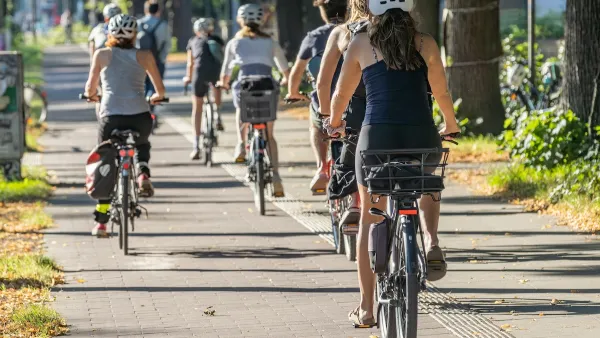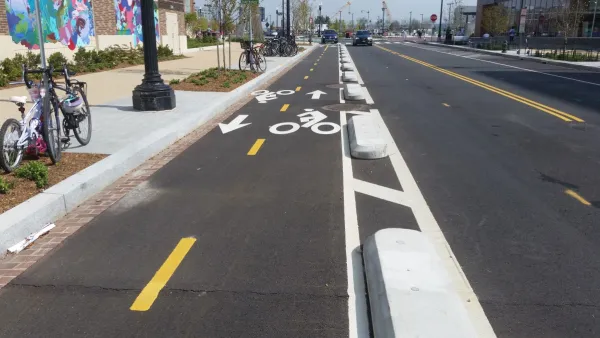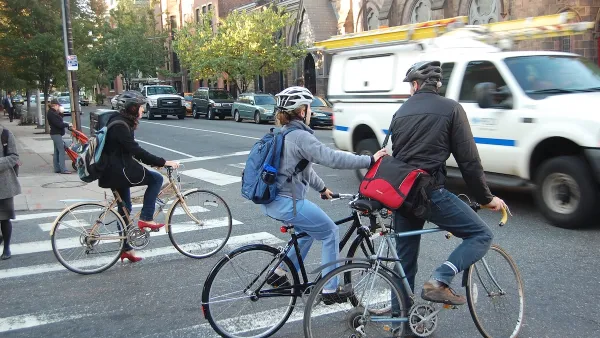The city’s fire department is pushing back on proposed bike lanes and narrower streets, citing concerns about emergency access.

The Oakland Fire Department is opposing proposed changes to the city’s fire code, arguing that narrowing streets and adding protected bike lanes could hinder access for emergency vehicles. Jose Fermoso covers the story for The Oaklandside.
As Fermoso notes, “Currently, the city’s fire code requires streets to be a minimum of 26 feet wide where building heights are 30 feet or taller.” According to the Oakland Fire Department, the city’s older buildings necessitate wider streets in the event of a catastrophic collapse. But other cities, such as Portland and San Francisco, have changed their fire codes to reduce required street widths.
Kevin Dalley, of the Traffic Violence Rapid Response Team, says “it’s important to remember that removing the 26-foot rule from the code does not mean it would force the city to narrow every road. This change simply ‘would allow us to examine streets and buildings on a case-by-case basis,’ he said.” At a public meeting, Dalley said, “I’m asking the Oakland Fire Department to add to their mission and consider the safety of pedestrian cyclists and motorists when they review street design.”
The state standard for street width, and that of the National Fire Protection Association, is 20 feet. The city is amending other parts of the fire code to improve pedestrian safety, such as raising curb heights.
FULL STORY: Street safety advocates want narrower roads. The fire department is opposed

Planetizen Federal Action Tracker
A weekly monitor of how Trump’s orders and actions are impacting planners and planning in America.

San Francisco's School District Spent $105M To Build Affordable Housing for Teachers — And That's Just the Beginning
SFUSD joins a growing list of school districts using their land holdings to address housing affordability challenges faced by their own employees.

The Tiny, Adorable $7,000 Car Turning Japan Onto EVs
The single seat Mibot charges from a regular plug as quickly as an iPad, and is about half the price of an average EV.

Trump Approves Futuristic Automated Texas-Mexico Cargo Corridor
The project could remove tens of thousands of commercial trucks from roadways.

Austin's First Single Stair Apartment Building is Officially Underway
Eliminating the requirement for two staircases in multi-story residential buildings lets developers use smaller lots and more flexible designs to create denser housing.

Atlanta Bus System Redesign Will Nearly Triple Access
MARTA's Next Gen Bus Network will retool over 100 bus routes, expand frequent service.
Urban Design for Planners 1: Software Tools
This six-course series explores essential urban design concepts using open source software and equips planners with the tools they need to participate fully in the urban design process.
Planning for Universal Design
Learn the tools for implementing Universal Design in planning regulations.
Smith Gee Studio
City of Charlotte
City of Camden Redevelopment Agency
City of Astoria
Transportation Research & Education Center (TREC) at Portland State University
US High Speed Rail Association
City of Camden Redevelopment Agency
Municipality of Princeton (NJ)





























